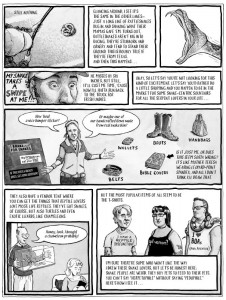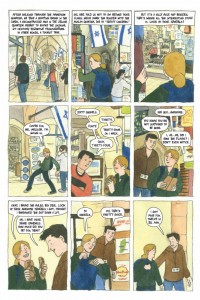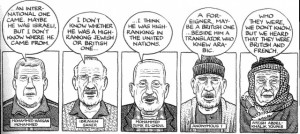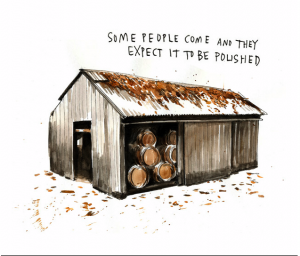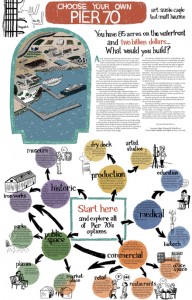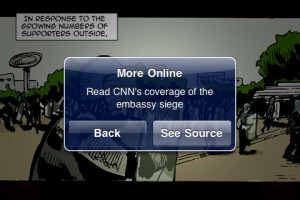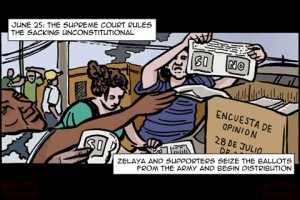What’s the funniest comic you’ve ever read? Was it true?
Editing a magazine of comics journalism presents some interesting challenges. Symbolia merges non-fiction reporting, illustration, and interactive elements. We’re trying a new kind of news, and it seems to be working. We’ve built a truly global audience for our work (only 55% of our subscribers are in the US), which is amazing.
But there’s still something that I’m struggling to do: break through the somber tones affecting most comics journalism today and publish something that is deeply, truly, gut-bustingly hilarious. Editorial cartoons don’t count. While they rely on fact, the use of caricature and, y’know, opinion, can obscure the integrity of the reportage.
Seriousness is something that plagues non-fiction comics in general. From Fun Home to Stitches to Palestine, things can get pretty grim. It could be because comics are still trying to “prove themselves” as a medium—but I sure hope not. We’re all over the “but comics aren’t for kids anymore” thing….right?
When I was developing Symbolia, when it was just a twinkle in my eye, I was continually asked two questions:
- But how will you make it funny?
- Well, is it true?
I’d like to think there’s room in the world for both. Give me the John Jeremiah Sullivan of comics journalism. Please. The funniest non-fiction comics work I’ve read in the past few years has been autobiographical, not reportage: Vanessa Davis’ Make Me a Woman and Drinking at the Movies by Julia Wertz. More David Sedaris than David Remnick.
Matt Diffee’s reportage on snake handlers in the Cartoon Picayune is a refreshing break from the oh-so-serious comics journalism trope, but his breed of work is pretty rare. Andy Warner has also done some amazing work for us and we love the little easter eggs he peppers throughout each project.
Matt Diffee for the Cartoon Picayune
What to do about it?
We’re closing production on Symbolia’s third issue now and one thing is painfully obvious: Comics journalism can be whimsical. It can be gut-wrenchingly honest. It can be evocative and convey real emotions. Comics can convey humor. Comics can convey truth. But can they do both?
I often feel, as an editor of a news product, that we have to prove the veracity of our work since it’s not “typical news.” That often means we fact-check the funny out.
Audrey Quinn and Kat Fajardo for Symbolia
So, we’ve developed all of these coping mechanisms to add delight–but our jokes are few and far between. We’re publishing a story on sexbot AI in the next issue and I finally feel like we have something that is deeply humorous, though it pushes a few journalistic boundaries.
I figured I’d take this conundrum to the HU community and ask you to prove me wrong. I’m looking for deeply funny, deeply true examples of comics journalism. SO: Let’s take this to the comments. I want you to tell me I’m wrong. What’s out there? Is what I’m looking for even possible? I’ll be diving in and out of the ensuring thread over the weekend and will pull the most interesting, most insightful comments up into this post.
Starter question: What is the single most hilarious work of non-fiction comics you’ve ever read? Why? GO!
All right, we got some great ideas–R. Crumb, Jessica Abel, Harvey Kurtzman, and more.
Time for my next question: When the cartooning is REALLY cartoony, can a comic still convey truth?

